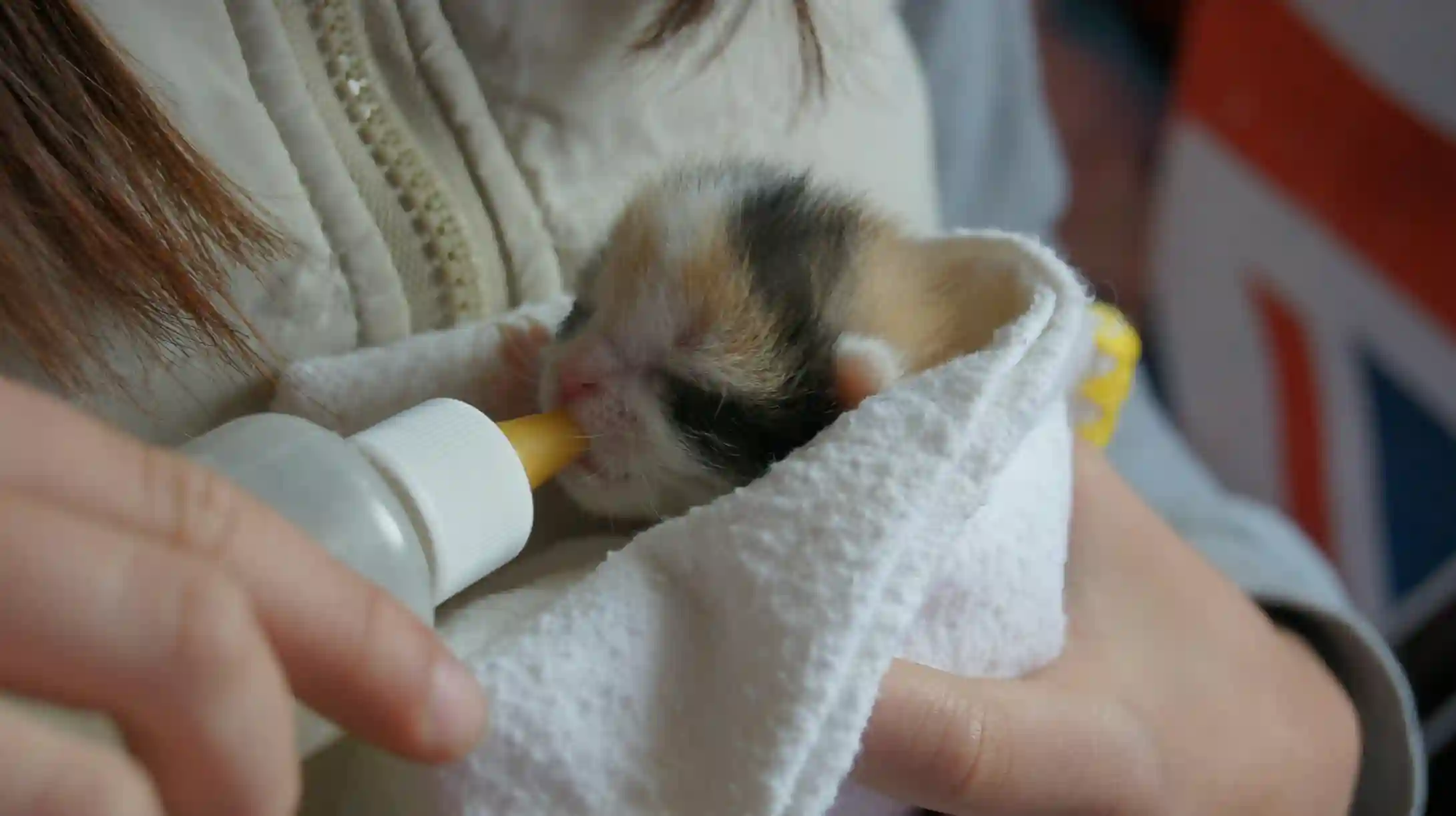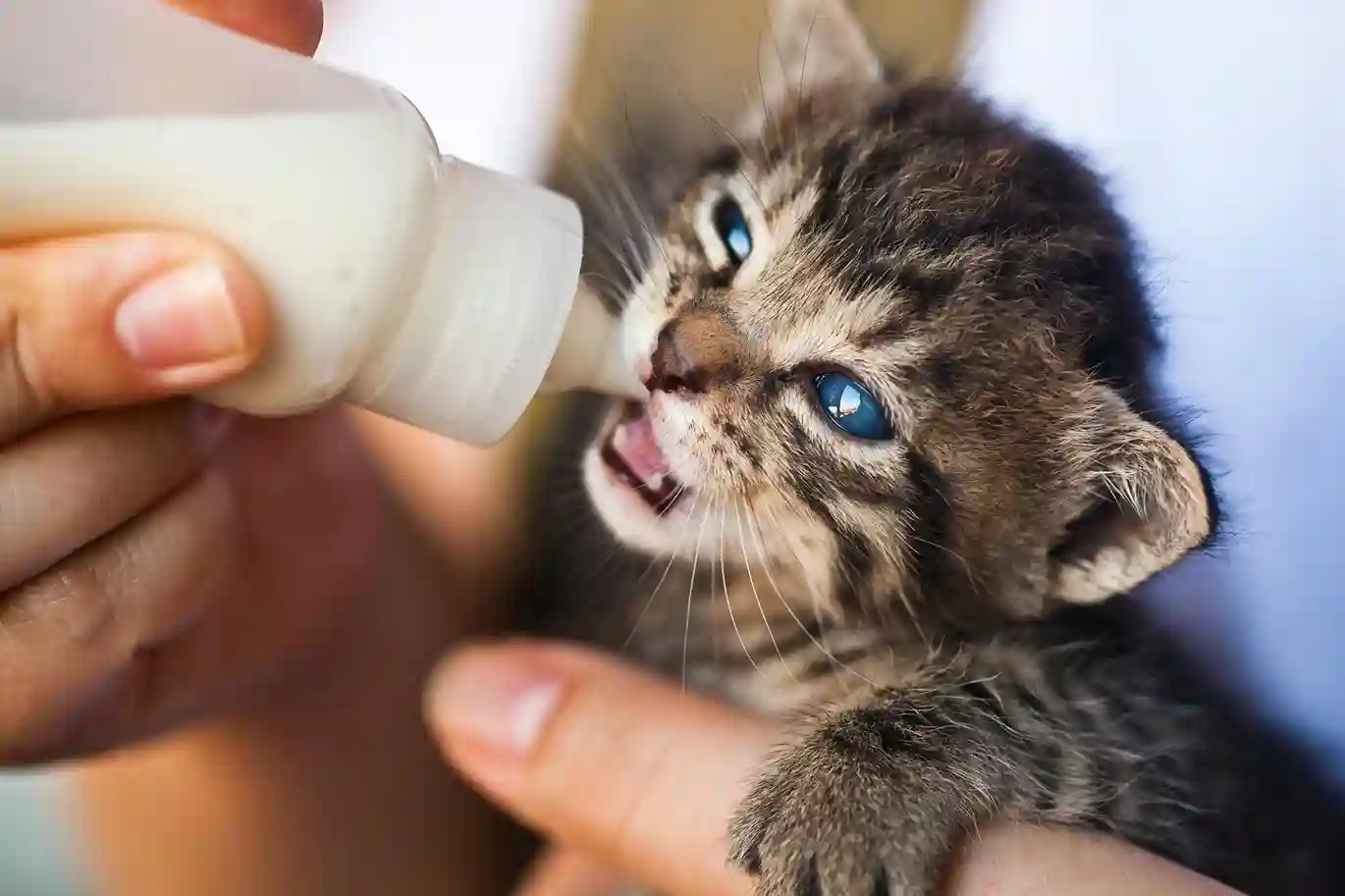The easiest Kitten Feeding Schedule
Did you know that poor feeding habits could lead to lifelong health issues for your kitty? Here’s how to avoid that! New Kitten coming home! What You Should Know First About Feeding Your Cat As easy as feeding your kitten may seem, a routine of controlled portion feelings will result in helping your cat grow into an otherwise healthy and happy being.
Today, I will tell you the simplest kitten feeding schedule according to age in this article. In case you are a first-time kitten parent or just use refreshers, listed here is how to give food the kitty. some easy Tips for Simple Kitten Feeding
Why a Feeding Schedule Matters for Your Kitten
Kitty kittens are a lot like kids in a lot of ways. They need a lot of food to get big and strong. The set schedule by which they are fed entails that however delicious the food may smell, its quantity is limited to an acceptable range two times a day. A steady feeding plan not only promotes physical growth but also gives your cat a sense of comfort. Cats thrive on regularity, and eating is an essential part of their daily existence.
I remembered When the first time I got the kitten, I didn’t know how important feeding schedules were. At first, I let her eat whenever she wanted, which resulted in overfeeding and an angry cat. After setting up a regular feeding schedule, everything improved! Energy increased, health improved and she became more calm.
How Often Should You Feed Your Kitten?
Kittens gain quickly, thus their feeding demands vary according on their age. Let us break it down:
- 0–4 weeks old: During its first few weeks of life, kittens depend completely on their mother’s milk. They should eat every 2-3 hours. If you are bottle-feeding, check your veterinarian about the best kitten formula.
- 4-8 Weeks Old: This is the feeding stage. Start introducing wet food while still providing milk or formula. Serve little amounts of moist food many times each day.
- 8-12 Weeks Old: At this stage, feed your kitten 4-5 tiny bites each day. They should be completely weaned and consuming solid kitten food. Always ensure that the food is specifically prepared for kittens’ developing bodies.
- 3-6 Months Old: You can now decrease feedings to three meals each day. Your cat is more independent as well as can eat somewhat larger meals. However, avoid overeating it; portion control is essential!
Watch your kitten’s body language if you’re not sure how much they need to eat. Would your cat joyfully eat its food, or will it left food behind? This is a good indication of whether you should change their portion amounts.
What Type of Food Should You Feed Your Kitten?
Getting sure you know how often to feed your kitten is just as important as giving them the right type of food. Kittens need to eat a lot of fats and carbs to keep rising. Here is a breakdown of the two main types of kitten food:
- Wet Food: Cats and kittens should eat wet food because it adds wetness to their food and helps them stay fresh. When their teeth are still coming in, kittens that are young find it easier to eat. But wet food is messy and generally needs to be put in the fridge after being opened.
- Dry Food: It’s helpful to have dry food because it can be kept for a long time without going bad. It’s good for your kitten’s teeth too. But because dry food makes cats less moist, make sure they always have fresh water available. Your kitten might like the taste of wet food, so you might have to try different things to find out what works best for him.
Take cautious not to give your cat any human food! It can look attractive, but most of human foods are harmful to cats. For a comprehensive list of items to avoid, see our article Why You Should “Never Feed Your Kitten These Human items.”

Sample Kitten Feeding Schedule
Here’s a sample schedule to help guide you:
- Morning (7 AM): Serve a portion of wet food.
- Mid-Morning (10 AM): Offer a small snack of dry food.
- Afternoon (1 PM): Another wet food meal.
- Early Evening (5 PM): A dry food snack.
- Before Bed (9 PM): A final wet food meal to help keep your kitten full overnight.
Feel free to change the times to suit your daily schedule, but keep the quantities constant. With practice, you’ll be able to recognize when your kitty is hungry and tailor the schedule accordingly.
Tips for Creating a Healthy Feeding Environment
When and how you feed your cat might influence its feeding habits. Place their water and food bowls in a clean, peaceful area. Never feed a kitten in a busy or loud room since it is easily distracted. so never feed them in crowded or noisy areas of the house. Also, to avoid germ growth, wash their bowls on a regular basis.
Do not forget about water! Cats have a low thirst control, therefore having clean water provided at all times is essential. Some kittens enjoy flowing water, so think about getting a cat water fountain.
A feeding routine can also be a bonding experience. Try sitting with your kitten during meals, offering some gentle petting while they eat. It helps build trust and reinforces a positive association with feeding time.
Recognizing Feeding Problems Early On
Regular feedings also allow you to check your kitten’s general health. It might be a sign of illness if your kitty suddenly stops eating. dislike to the food, illness, or stress are all potential reasons.
If your kitten looks to be eating a lot and gaining weight quickly, on the other hand, you may need to limit the quantity they eat. Obesity might cause major health problems as your cat develops.
If you see an unexpected change in your kitten’s eating habits, you should get in touch with your vet right away. “How to Deal with a Picky Eater” is an article we wrote that may be useful when dealing with children’s too particular dietary needs.
Transitioning to Adult Cat Food
Around the one-year mark, you should think about introducing adult cat food to your kitten. Your cat’s diet will change about when it is twelve months old, at that point the high-calorie kitten food will be unnecessary.
When transitioning, do it gradually. Begin by adding a little quantity of adult cat food into your kitten’s current meal. Over the course of a week or two, gradually raise the percentage of adult food as lowering kitten food. This will help avoid stomach troubles.
Your veterinarian is the best “doctor” for your kitten, therefore he or she should be consulted before making any major changes to its diet.
Conclusion
Maintaining a consistent feeding plan is one of the best ways to guarantee your cat’s health and happiness. What a cat requires for growth may be provided for if you feed it on a schedule, with the right food, and adjust the amounts as it develops.
Please tell me about it! Leave a comment with your suggestions, and while you’re doing it, check out our related posts like “Top Cat Food Choices for Gassy Kittens | Expert Tips and Solutions for Digestive Health” and “How to Deal with a Picky Eater Cat: Tips for Success“.

